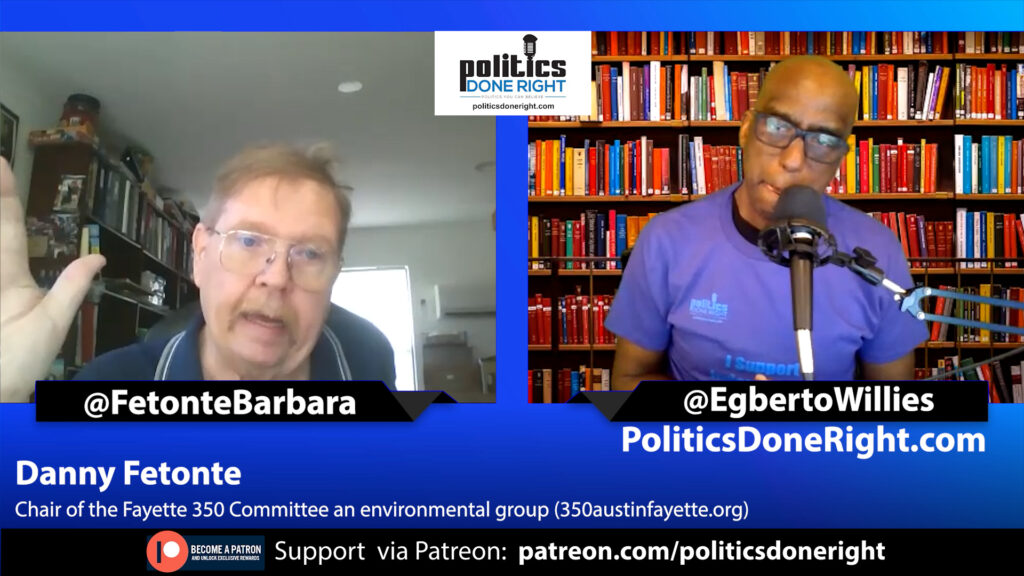Austin, Texas Environmentalist Danny Fetonte is relentless to protect communities hurt by a coal-burning power plant’s ash & more.
Environmentalist Danny Fetonte speaks
Danny Fetonte will scream it from the rooftop if it helps. He has been consistent in mobilizing people to force a coal-burning plant to act responsibly. Currently, the coal ash, the residue from burning coal, is not stored correctly.
Detonte’s website explain the problem a follows.
The City of Austin owns one-third of the Fayette Coal Plant in La Grange, TX. This coal plant is one of the largest air polluters in the state of Texas. The Fayette Coal Plant produces coal ash every day. Coal ash is a poisonous sludge that contains arsenic, mercury, lead, and chromium. This poisonous sludge is put in the ground of the Fayette Coal Plant, 48 feet deep, with a thin layer of clay around it. This coal ash seeps into the water table of La Grange. La Grange has twice the cancer rate of the City of Austin. The City of Austin has done nothing to stop more poisonous coal ash from being deposited above La Grange’s water table.
And what is the problem with the coal ash?
- Coal ash contains contaminants like mercury, cadmium, arsenic, and lead.
- Without proper management, these contaminants can pollute waterways, ground water, drinking water, and the air.
- In a recent report by the Environmental Integrity Project, an independent research and advocacy group, found that the groundwater around coal-fired plants across the state contain levels of pollutants like arsenic, boron, cobalt or lithium that would make it unsafe for human consumption
- It also found that almost none of the impoundments where plants dispose of spent coal are lined properly to prevent leakage.
- Coal Ash is buried 48 feet deep pits and then covered with topsoil. The pits have a thin layer of clay lining. This thin lining allows for high levels of contaminants leaching into the water table.
Danny is a warrior. Central Texas is lucky to have him making the necessary moves to protect our resources.
